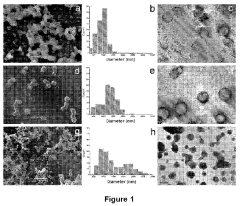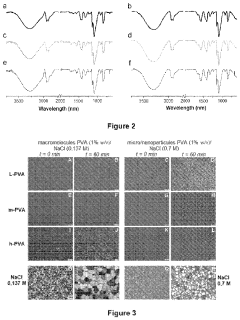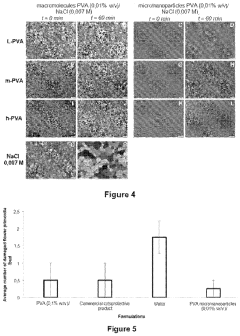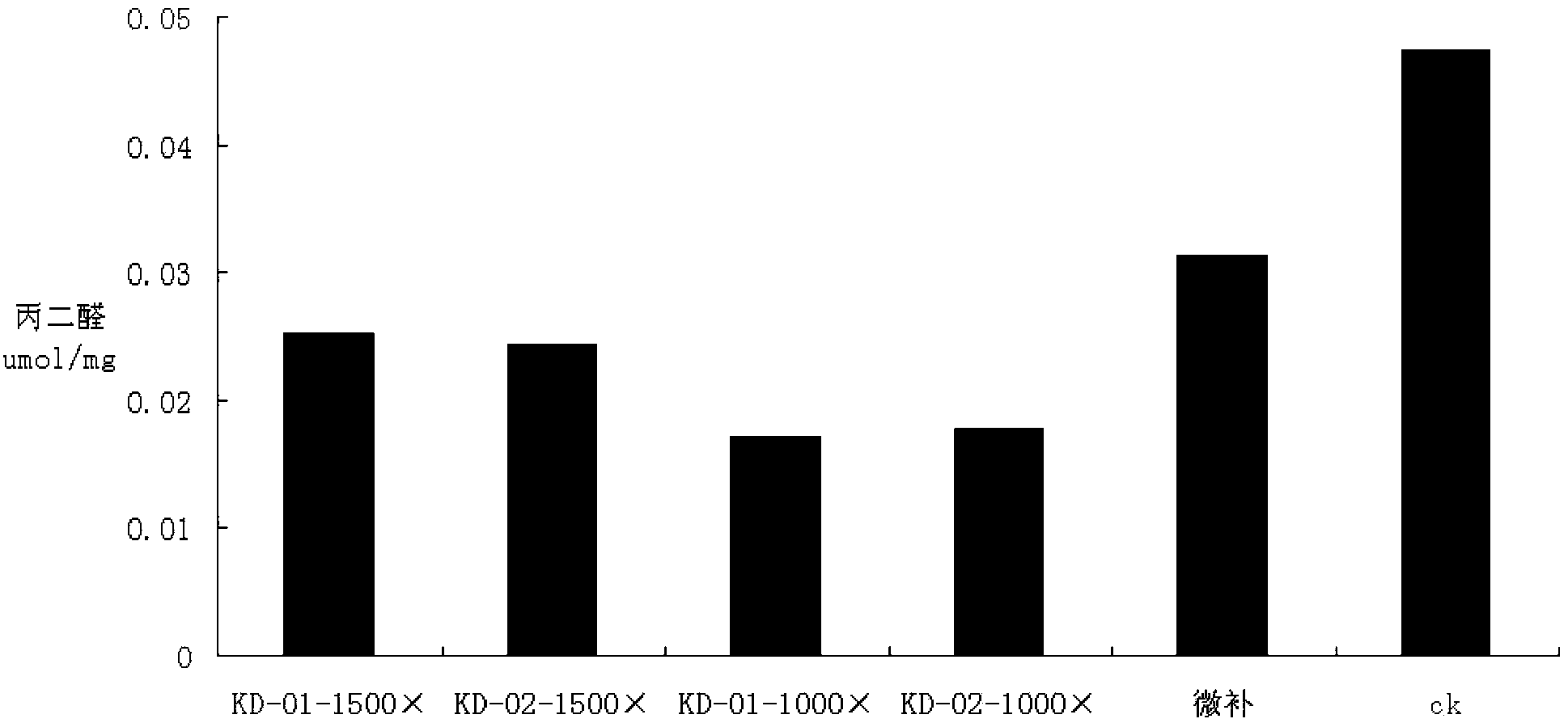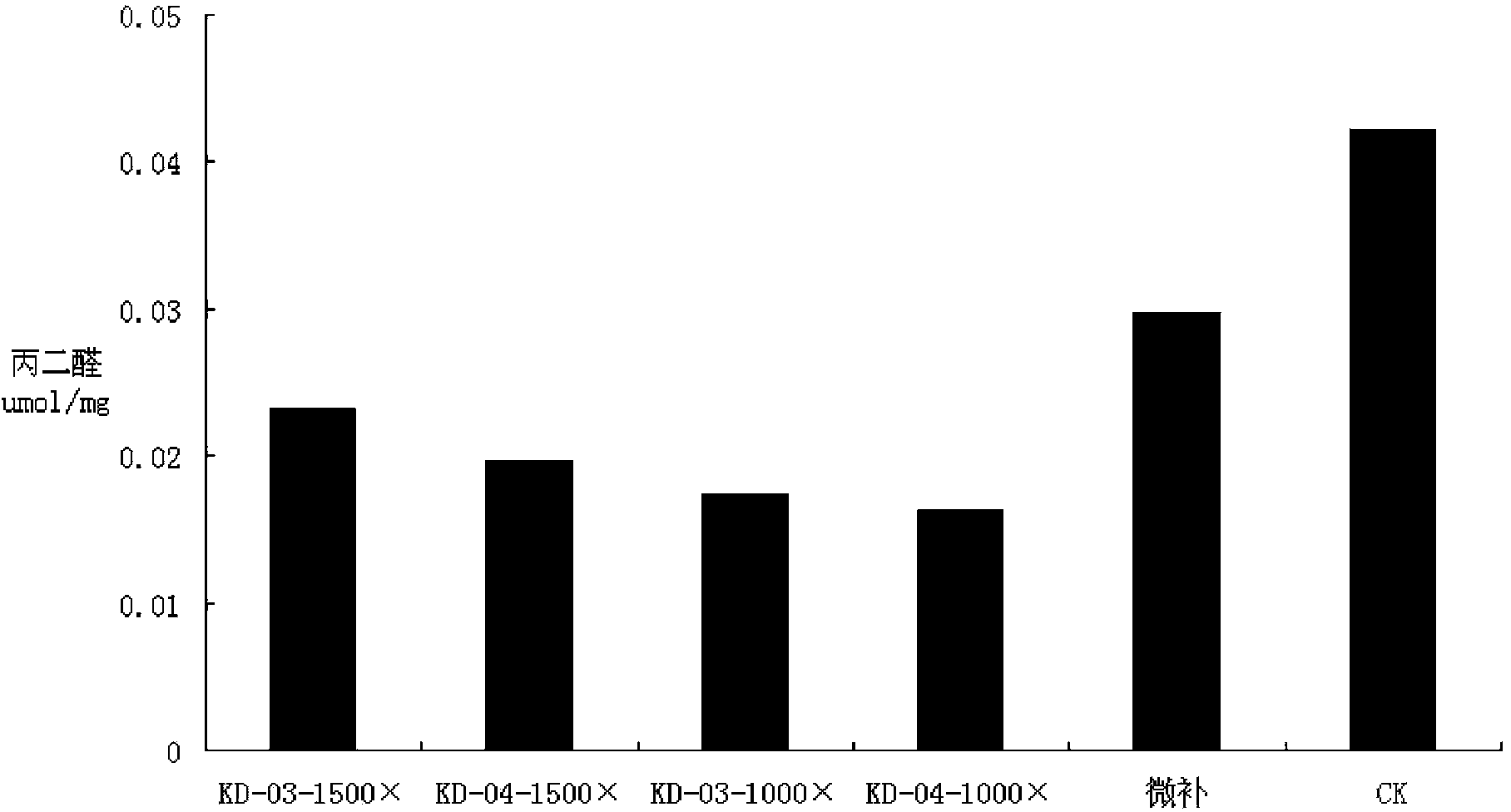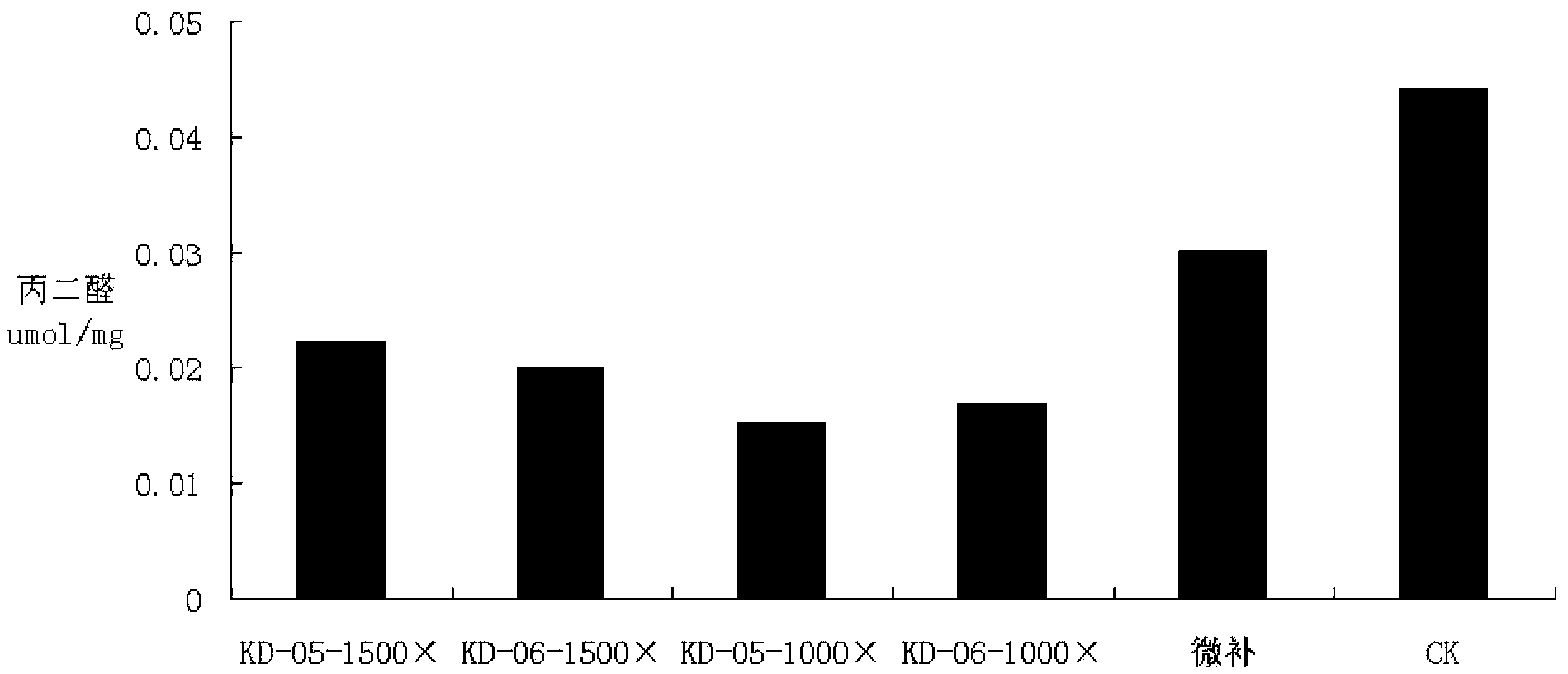Antifreeze in Cold Climate Agriculture: Benefits and Methods?
JUL 2, 20259 MIN READ
Generate Your Research Report Instantly with AI Agent
Patsnap Eureka helps you evaluate technical feasibility & market potential.
Antifreeze Tech Evolution
The evolution of antifreeze technology in cold climate agriculture has been marked by significant advancements over the past century. Initially, farmers relied on traditional methods such as crop selection and timing to mitigate frost damage. The early 20th century saw the introduction of basic chemical solutions, primarily salt-based, to lower the freezing point of water in plants.
In the 1950s, a major breakthrough occurred with the discovery of antifreeze proteins in Arctic fish. This led to extensive research into biological antifreeze compounds and their potential applications in agriculture. By the 1970s, synthetic versions of these proteins were being developed and tested on crops, marking a shift towards more targeted and effective antifreeze solutions.
The 1980s and 1990s witnessed the emergence of polymer-based antifreeze products. These compounds formed protective coatings on plant surfaces, providing a physical barrier against ice formation. Concurrently, advancements in weather forecasting and precision agriculture technologies enabled more accurate prediction and localized application of antifreeze treatments.
The turn of the millennium brought about a focus on environmentally friendly antifreeze solutions. Researchers began exploring natural plant extracts and biodegradable compounds as alternatives to synthetic chemicals. This period also saw the integration of nanotechnology, with the development of nanoparticle-based antifreeze formulations that offered enhanced efficiency and reduced environmental impact.
Recent years have seen a convergence of multiple technologies in antifreeze solutions. Genetic engineering techniques are being employed to enhance plants' natural frost resistance. Smart delivery systems, utilizing IoT and AI, are optimizing the timing and dosage of antifreeze applications. Additionally, the concept of 'antifreeze landscapes' is gaining traction, where entire agricultural ecosystems are designed to mitigate frost damage through strategic planting and microclimate manipulation.
Looking ahead, the future of antifreeze technology in agriculture is likely to involve further integration with emerging fields such as synthetic biology and advanced materials science. Researchers are exploring the potential of engineered microorganisms to produce antifreeze compounds in situ, as well as developing 'smart' materials that can dynamically respond to temperature changes. These innovations promise to revolutionize cold climate agriculture, enhancing crop resilience and productivity in the face of increasingly unpredictable weather patterns.
In the 1950s, a major breakthrough occurred with the discovery of antifreeze proteins in Arctic fish. This led to extensive research into biological antifreeze compounds and their potential applications in agriculture. By the 1970s, synthetic versions of these proteins were being developed and tested on crops, marking a shift towards more targeted and effective antifreeze solutions.
The 1980s and 1990s witnessed the emergence of polymer-based antifreeze products. These compounds formed protective coatings on plant surfaces, providing a physical barrier against ice formation. Concurrently, advancements in weather forecasting and precision agriculture technologies enabled more accurate prediction and localized application of antifreeze treatments.
The turn of the millennium brought about a focus on environmentally friendly antifreeze solutions. Researchers began exploring natural plant extracts and biodegradable compounds as alternatives to synthetic chemicals. This period also saw the integration of nanotechnology, with the development of nanoparticle-based antifreeze formulations that offered enhanced efficiency and reduced environmental impact.
Recent years have seen a convergence of multiple technologies in antifreeze solutions. Genetic engineering techniques are being employed to enhance plants' natural frost resistance. Smart delivery systems, utilizing IoT and AI, are optimizing the timing and dosage of antifreeze applications. Additionally, the concept of 'antifreeze landscapes' is gaining traction, where entire agricultural ecosystems are designed to mitigate frost damage through strategic planting and microclimate manipulation.
Looking ahead, the future of antifreeze technology in agriculture is likely to involve further integration with emerging fields such as synthetic biology and advanced materials science. Researchers are exploring the potential of engineered microorganisms to produce antifreeze compounds in situ, as well as developing 'smart' materials that can dynamically respond to temperature changes. These innovations promise to revolutionize cold climate agriculture, enhancing crop resilience and productivity in the face of increasingly unpredictable weather patterns.
Market Demand Analysis
The market demand for antifreeze solutions in cold climate agriculture has been steadily increasing due to the growing need for crop protection in harsh winter conditions. As global climate patterns become more unpredictable, farmers in traditionally temperate regions are experiencing more frequent frost events, driving the adoption of antifreeze technologies. This trend is particularly evident in major agricultural markets such as North America, Europe, and parts of Asia.
The primary drivers of market demand include the need to extend growing seasons, protect high-value crops, and ensure food security in regions prone to sudden temperature drops. Fruit orchards, vineyards, and vegetable farms are among the most significant consumers of agricultural antifreeze products, as these crops are highly susceptible to frost damage. The berry industry, for instance, has seen a substantial increase in antifreeze usage to protect delicate blossoms and fruits during critical growth stages.
Market analysis indicates that the global agricultural antifreeze market is expected to grow significantly over the next decade. This growth is attributed to several factors, including the expansion of agriculture into colder regions, the increasing frequency of extreme weather events, and the rising awareness among farmers about the economic benefits of frost protection measures.
The demand for environmentally friendly and sustainable antifreeze solutions is also on the rise. Organic farmers and those concerned with soil health are seeking alternatives to traditional chemical-based antifreeze products. This has led to increased research and development in bio-based and biodegradable antifreeze formulations, creating new market opportunities for innovative companies.
Geographically, North America and Europe currently dominate the agricultural antifreeze market, with the United States, Canada, and countries in Northern Europe being key consumers. However, emerging markets in Asia-Pacific, particularly China and Japan, are showing rapid growth in demand as they intensify their agricultural practices and adapt to changing climate conditions.
The market is also seeing a shift towards more sophisticated antifreeze application methods. Precision agriculture techniques, including sensor-based systems and automated spraying technologies, are gaining traction. These advanced methods not only improve the efficacy of antifreeze applications but also help reduce waste and environmental impact, further driving market growth.
As climate change continues to affect agricultural patterns worldwide, the demand for antifreeze solutions is expected to expand into new geographical areas and crop types. This presents both challenges and opportunities for manufacturers and researchers to develop more effective, sustainable, and economically viable antifreeze products for the agricultural sector.
The primary drivers of market demand include the need to extend growing seasons, protect high-value crops, and ensure food security in regions prone to sudden temperature drops. Fruit orchards, vineyards, and vegetable farms are among the most significant consumers of agricultural antifreeze products, as these crops are highly susceptible to frost damage. The berry industry, for instance, has seen a substantial increase in antifreeze usage to protect delicate blossoms and fruits during critical growth stages.
Market analysis indicates that the global agricultural antifreeze market is expected to grow significantly over the next decade. This growth is attributed to several factors, including the expansion of agriculture into colder regions, the increasing frequency of extreme weather events, and the rising awareness among farmers about the economic benefits of frost protection measures.
The demand for environmentally friendly and sustainable antifreeze solutions is also on the rise. Organic farmers and those concerned with soil health are seeking alternatives to traditional chemical-based antifreeze products. This has led to increased research and development in bio-based and biodegradable antifreeze formulations, creating new market opportunities for innovative companies.
Geographically, North America and Europe currently dominate the agricultural antifreeze market, with the United States, Canada, and countries in Northern Europe being key consumers. However, emerging markets in Asia-Pacific, particularly China and Japan, are showing rapid growth in demand as they intensify their agricultural practices and adapt to changing climate conditions.
The market is also seeing a shift towards more sophisticated antifreeze application methods. Precision agriculture techniques, including sensor-based systems and automated spraying technologies, are gaining traction. These advanced methods not only improve the efficacy of antifreeze applications but also help reduce waste and environmental impact, further driving market growth.
As climate change continues to affect agricultural patterns worldwide, the demand for antifreeze solutions is expected to expand into new geographical areas and crop types. This presents both challenges and opportunities for manufacturers and researchers to develop more effective, sustainable, and economically viable antifreeze products for the agricultural sector.
Current Challenges
The use of antifreeze in cold climate agriculture faces several significant challenges that hinder its widespread adoption and effectiveness. One of the primary obstacles is the potential environmental impact of traditional antifreeze chemicals. Many conventional antifreeze solutions contain ethylene glycol or propylene glycol, which can be toxic to plants, animals, and microorganisms if they leach into the soil or water systems. This raises concerns about long-term soil health and ecosystem balance in agricultural areas where antifreeze is regularly applied.
Another challenge lies in the economic feasibility of implementing antifreeze solutions on a large scale. The cost of antifreeze products and their application can be substantial, especially for small-scale farmers or those operating in economically challenged regions. This financial burden may outweigh the perceived benefits, particularly in areas where cold snaps are infrequent or unpredictable.
The efficacy of antifreeze solutions in diverse agricultural settings also presents a challenge. Different crops and soil types may respond differently to antifreeze applications, making it difficult to develop a one-size-fits-all solution. Additionally, the varying intensity and duration of cold events in different regions complicate the development of standardized application protocols.
There are also technical challenges related to the application methods of antifreeze solutions. Ensuring even distribution across large agricultural areas can be logistically complex and labor-intensive. The timing of application is crucial, as applying too early or too late can significantly reduce effectiveness. Moreover, the interaction between antifreeze solutions and other agricultural inputs, such as fertilizers or pesticides, is not fully understood and may lead to unforeseen complications.
The regulatory landscape surrounding the use of antifreeze in agriculture adds another layer of complexity. Different countries and regions have varying regulations regarding the use of chemical substances in food production. Navigating these regulatory frameworks and obtaining necessary approvals can be time-consuming and costly for manufacturers and farmers alike.
Lastly, there is a challenge in educating and convincing farmers about the benefits and proper use of antifreeze solutions. Many farmers may be hesitant to adopt new technologies or methods, especially if they have been using traditional cold protection techniques for generations. Overcoming this resistance and providing clear, evidence-based information on the advantages and best practices of antifreeze use in agriculture is essential for wider adoption.
Another challenge lies in the economic feasibility of implementing antifreeze solutions on a large scale. The cost of antifreeze products and their application can be substantial, especially for small-scale farmers or those operating in economically challenged regions. This financial burden may outweigh the perceived benefits, particularly in areas where cold snaps are infrequent or unpredictable.
The efficacy of antifreeze solutions in diverse agricultural settings also presents a challenge. Different crops and soil types may respond differently to antifreeze applications, making it difficult to develop a one-size-fits-all solution. Additionally, the varying intensity and duration of cold events in different regions complicate the development of standardized application protocols.
There are also technical challenges related to the application methods of antifreeze solutions. Ensuring even distribution across large agricultural areas can be logistically complex and labor-intensive. The timing of application is crucial, as applying too early or too late can significantly reduce effectiveness. Moreover, the interaction between antifreeze solutions and other agricultural inputs, such as fertilizers or pesticides, is not fully understood and may lead to unforeseen complications.
The regulatory landscape surrounding the use of antifreeze in agriculture adds another layer of complexity. Different countries and regions have varying regulations regarding the use of chemical substances in food production. Navigating these regulatory frameworks and obtaining necessary approvals can be time-consuming and costly for manufacturers and farmers alike.
Lastly, there is a challenge in educating and convincing farmers about the benefits and proper use of antifreeze solutions. Many farmers may be hesitant to adopt new technologies or methods, especially if they have been using traditional cold protection techniques for generations. Overcoming this resistance and providing clear, evidence-based information on the advantages and best practices of antifreeze use in agriculture is essential for wider adoption.
Existing Antifreeze Methods
01 Composition of antifreeze solutions
Antifreeze solutions typically consist of a mixture of water and chemical compounds designed to lower the freezing point of the solution. Common ingredients include glycols, alcohols, and various additives to enhance performance and protect against corrosion. These solutions are formulated to provide effective freeze protection in various applications, such as automotive cooling systems and industrial processes.- Composition of antifreeze solutions: Antifreeze solutions typically consist of a mixture of water and chemicals such as ethylene glycol or propylene glycol. These solutions lower the freezing point of water and raise its boiling point, making them effective in preventing freezing in various applications, including automotive cooling systems.
- Additives for enhanced antifreeze performance: Various additives are incorporated into antifreeze formulations to improve their performance. These may include corrosion inhibitors, anti-foaming agents, and lubricants. Such additives help protect metal components, reduce foam formation, and enhance the overall efficiency of the antifreeze solution.
- Environmental and safety considerations: There is a growing focus on developing environmentally friendly and less toxic antifreeze solutions. This includes the use of biodegradable materials and alternatives to traditional ethylene glycol-based formulations, which can be harmful if ingested. Safety features such as bittering agents are also being incorporated to deter accidental consumption.
- Application-specific antifreeze formulations: Antifreeze solutions are tailored for specific applications beyond automotive use. These include formulations for industrial processes, HVAC systems, and even cryogenic applications. The composition and additives are adjusted to meet the unique requirements of each application, such as temperature range, compatibility with materials, and longevity.
- Recycling and disposal of antifreeze: Methods for recycling and proper disposal of used antifreeze are being developed to reduce environmental impact. These include filtration and chemical treatment processes to remove contaminants and restore the antifreeze to a usable condition. Proper disposal methods are also being implemented to prevent groundwater contamination.
02 Antifreeze recycling and purification methods
Various techniques have been developed to recycle and purify used antifreeze solutions. These methods often involve filtration, distillation, or chemical treatment processes to remove contaminants and restore the antifreeze to its original effectiveness. Recycling antifreeze helps reduce waste and environmental impact while providing cost-effective solutions for maintaining cooling systems.Expand Specific Solutions03 Antifreeze applications in renewable energy systems
Antifreeze solutions play a crucial role in renewable energy systems, particularly in solar thermal and geothermal applications. These solutions help maintain optimal operating temperatures and prevent freezing in heat transfer systems, ensuring efficient energy production and storage. Specialized antifreeze formulations may be developed to meet the specific requirements of different renewable energy technologies.Expand Specific Solutions04 Environmentally friendly antifreeze alternatives
Research and development efforts have focused on creating more environmentally friendly antifreeze alternatives. These may include bio-based or plant-derived compounds, as well as formulations with reduced toxicity and improved biodegradability. Such alternatives aim to minimize environmental impact while maintaining the necessary freeze protection and heat transfer properties.Expand Specific Solutions05 Antifreeze testing and quality control methods
Various testing and quality control methods have been developed to ensure the effectiveness and safety of antifreeze solutions. These may include measurements of freezing point depression, boiling point elevation, pH levels, and corrosion inhibition properties. Advanced analytical techniques and standardized testing procedures help maintain consistent product quality and performance across different applications and industries.Expand Specific Solutions
Key Industry Players
The antifreeze technology in cold climate agriculture is in a growth phase, with increasing market size due to expanding agricultural activities in colder regions. The global market for agricultural antifreeze solutions is projected to grow significantly in the coming years. Technologically, the field is moderately mature, with ongoing innovations focused on improving efficiency and environmental sustainability. Key players like Bayer CropScience LP and Monsanto Technology LLC are driving advancements in crop protection for cold climates. Universities such as China Agricultural University and Nanjing Agricultural University are contributing to research and development, while companies like Chengdu New Sun Crop Science Co., Ltd. are developing specialized products for this niche market.
Bayer CropScience LP
Technical Solution: Bayer CropScience LP has developed innovative antifreeze solutions for cold climate agriculture. Their approach involves the use of bio-based antifreeze compounds that are environmentally friendly and effective in protecting crops from frost damage. The company has formulated a range of products that can be applied as foliar sprays or soil treatments, creating a protective layer around plants and preventing ice crystal formation within plant cells[1]. These solutions work by lowering the freezing point of water in plant tissues, allowing crops to withstand temperatures several degrees below their normal frost tolerance levels[3]. Bayer's antifreeze products also incorporate nutrients that support plant health and vigor during cold stress, enhancing overall crop resilience[5].
Strengths: Environmentally friendly formulations, dual action of frost protection and plant nutrition, wide range of application methods. Weaknesses: May require multiple applications for season-long protection, effectiveness can vary depending on crop type and severity of cold conditions.
China Agricultural University
Technical Solution: China Agricultural University has conducted extensive research on antifreeze methods for cold climate agriculture, focusing on both chemical and biological approaches. Their studies have led to the development of novel antifreeze proteins (AFPs) derived from cold-tolerant plants and microorganisms[2]. These AFPs are capable of inhibiting ice crystal growth and recrystallization, providing effective protection for crops in sub-zero temperatures[4]. The university has also explored the use of exogenous applications of abscisic acid and other plant hormones to enhance cold tolerance in various crop species[6]. Additionally, they have investigated the potential of silicon-based compounds as antifreeze agents, which not only protect against frost but also improve overall plant stress resistance[8].
Strengths: Cutting-edge research in biological antifreeze solutions, potential for highly specific and effective crop protection. Weaknesses: Some methods may be costly to implement on a large scale, regulatory approval for novel biological agents can be challenging.
Innovative Antifreeze Tech
Aqueous formulation that reduces damage caused by spring frosts in plants and production method thereof
PatentActiveUS20220312760A1
Innovation
- An aqueous formulation containing micro/nanoparticles of PVA, combined with stabilizing agents, emulsifiers, and pH buffers, which inhibits ice recrystallization and reduces frost damage in plants by up to 20% without harming harvested fruit, achieved through a precipitation or alkaline treatment process.
Antifreeze agent for crops and application thereof
PatentActiveCN103483060A
Innovation
- Use betaine, mannitol, tea saponin and soluble calcium salt (preferably calcium nitrate) as active ingredients, combined with water as auxiliary materials, prepare the antifreeze through a specific ratio and dilution method, and spray it on the leaves of crop plants Apply.
Environmental Impact
The use of antifreeze in cold climate agriculture has significant environmental implications that must be carefully considered. While these substances can protect crops from frost damage and extend growing seasons, their potential impact on ecosystems and soil health requires thorough examination.
One of the primary environmental concerns is the potential for antifreeze chemicals to leach into groundwater and surface water systems. Many antifreeze compounds are water-soluble, which means they can easily be transported through soil and enter aquatic ecosystems. This can lead to contamination of drinking water sources and pose risks to aquatic life. The extent of this impact depends on factors such as soil composition, precipitation patterns, and the specific antifreeze formulation used.
Soil health is another critical consideration. Some antifreeze compounds may alter soil chemistry, potentially affecting microbial communities that are essential for nutrient cycling and plant growth. Long-term use of certain antifreeze products could lead to changes in soil structure and fertility, impacting overall ecosystem health and agricultural productivity.
The biodegradability of antifreeze substances is a key factor in assessing their environmental impact. Traditional ethylene glycol-based antifreezes can persist in the environment for extended periods, while newer, more environmentally friendly formulations based on propylene glycol or plant-derived compounds tend to break down more rapidly. The choice of antifreeze type can significantly influence the long-term environmental footprint of agricultural practices.
Air quality is another aspect to consider, particularly with spray-applied antifreeze products. Volatile organic compounds (VOCs) released during application can contribute to air pollution and potentially affect local air quality. This is especially relevant in areas where large-scale antifreeze application is common.
The impact on non-target organisms, including beneficial insects, birds, and small mammals, must also be evaluated. Some antifreeze compounds may be toxic if ingested or could alter habitat conditions, potentially disrupting local ecosystems and biodiversity.
From a broader perspective, the use of antifreeze in agriculture intersects with climate change considerations. While it allows for extended growing seasons in colder climates, potentially increasing food production, it also raises questions about energy use and carbon footprint associated with the production and application of these substances.
Mitigation strategies and best practices are essential to minimize the environmental impact of antifreeze use in agriculture. These may include precision application techniques, use of more environmentally friendly formulations, and implementation of buffer zones near water bodies. Ongoing research into sustainable alternatives and improved application methods is crucial for balancing the benefits of antifreeze use with environmental protection in cold climate agriculture.
One of the primary environmental concerns is the potential for antifreeze chemicals to leach into groundwater and surface water systems. Many antifreeze compounds are water-soluble, which means they can easily be transported through soil and enter aquatic ecosystems. This can lead to contamination of drinking water sources and pose risks to aquatic life. The extent of this impact depends on factors such as soil composition, precipitation patterns, and the specific antifreeze formulation used.
Soil health is another critical consideration. Some antifreeze compounds may alter soil chemistry, potentially affecting microbial communities that are essential for nutrient cycling and plant growth. Long-term use of certain antifreeze products could lead to changes in soil structure and fertility, impacting overall ecosystem health and agricultural productivity.
The biodegradability of antifreeze substances is a key factor in assessing their environmental impact. Traditional ethylene glycol-based antifreezes can persist in the environment for extended periods, while newer, more environmentally friendly formulations based on propylene glycol or plant-derived compounds tend to break down more rapidly. The choice of antifreeze type can significantly influence the long-term environmental footprint of agricultural practices.
Air quality is another aspect to consider, particularly with spray-applied antifreeze products. Volatile organic compounds (VOCs) released during application can contribute to air pollution and potentially affect local air quality. This is especially relevant in areas where large-scale antifreeze application is common.
The impact on non-target organisms, including beneficial insects, birds, and small mammals, must also be evaluated. Some antifreeze compounds may be toxic if ingested or could alter habitat conditions, potentially disrupting local ecosystems and biodiversity.
From a broader perspective, the use of antifreeze in agriculture intersects with climate change considerations. While it allows for extended growing seasons in colder climates, potentially increasing food production, it also raises questions about energy use and carbon footprint associated with the production and application of these substances.
Mitigation strategies and best practices are essential to minimize the environmental impact of antifreeze use in agriculture. These may include precision application techniques, use of more environmentally friendly formulations, and implementation of buffer zones near water bodies. Ongoing research into sustainable alternatives and improved application methods is crucial for balancing the benefits of antifreeze use with environmental protection in cold climate agriculture.
Economic Feasibility Study
The economic feasibility of implementing antifreeze techniques in cold climate agriculture depends on several factors, including initial investment costs, operational expenses, and potential yield improvements. The upfront costs for antifreeze systems can be substantial, involving the purchase of specialized equipment, such as frost protection fans, heaters, or sprinkler systems. Additionally, farmers may need to invest in monitoring technology to accurately predict frost events and optimize the use of antifreeze methods.
Operational costs include energy consumption for running antifreeze equipment, maintenance, and labor for system management. These ongoing expenses must be weighed against the potential benefits of crop protection and increased yields. In regions prone to frost damage, the economic impact of crop loss can be significant, making antifreeze methods a potentially cost-effective solution.
The return on investment for antifreeze techniques varies depending on the crop type, local climate conditions, and market prices. High-value crops such as fruits and vegetables often justify higher investments in frost protection due to their premium market prices. For instance, studies have shown that antifreeze methods can increase grape yields by up to 30% in frost-prone vineyards, potentially offsetting the implementation costs within a few growing seasons.
Government subsidies and insurance programs may also influence the economic feasibility of antifreeze techniques. Some regions offer financial incentives for farmers to adopt climate-resilient practices, which can help offset the initial investment costs. Additionally, the availability of crop insurance that factors in the use of antifreeze methods may reduce financial risks for farmers.
Long-term climate trends must be considered when assessing the economic viability of antifreeze systems. As climate change alters frost patterns and increases the frequency of extreme weather events, the value of reliable frost protection methods may increase. This could lead to a more favorable cost-benefit ratio for antifreeze techniques over time.
The scalability of antifreeze methods also impacts their economic feasibility. Large-scale operations may benefit from economies of scale, reducing per-acre costs for implementation and operation. Conversely, smaller farms may face challenges in justifying the initial investment, potentially leading to cooperative approaches or shared equipment schemes to distribute costs.
In conclusion, while the economic feasibility of antifreeze techniques in cold climate agriculture varies based on specific circumstances, the potential for increased crop yields and reduced losses often makes these methods a worthwhile investment for many farmers in frost-prone regions.
Operational costs include energy consumption for running antifreeze equipment, maintenance, and labor for system management. These ongoing expenses must be weighed against the potential benefits of crop protection and increased yields. In regions prone to frost damage, the economic impact of crop loss can be significant, making antifreeze methods a potentially cost-effective solution.
The return on investment for antifreeze techniques varies depending on the crop type, local climate conditions, and market prices. High-value crops such as fruits and vegetables often justify higher investments in frost protection due to their premium market prices. For instance, studies have shown that antifreeze methods can increase grape yields by up to 30% in frost-prone vineyards, potentially offsetting the implementation costs within a few growing seasons.
Government subsidies and insurance programs may also influence the economic feasibility of antifreeze techniques. Some regions offer financial incentives for farmers to adopt climate-resilient practices, which can help offset the initial investment costs. Additionally, the availability of crop insurance that factors in the use of antifreeze methods may reduce financial risks for farmers.
Long-term climate trends must be considered when assessing the economic viability of antifreeze systems. As climate change alters frost patterns and increases the frequency of extreme weather events, the value of reliable frost protection methods may increase. This could lead to a more favorable cost-benefit ratio for antifreeze techniques over time.
The scalability of antifreeze methods also impacts their economic feasibility. Large-scale operations may benefit from economies of scale, reducing per-acre costs for implementation and operation. Conversely, smaller farms may face challenges in justifying the initial investment, potentially leading to cooperative approaches or shared equipment schemes to distribute costs.
In conclusion, while the economic feasibility of antifreeze techniques in cold climate agriculture varies based on specific circumstances, the potential for increased crop yields and reduced losses often makes these methods a worthwhile investment for many farmers in frost-prone regions.
Unlock deeper insights with Patsnap Eureka Quick Research — get a full tech report to explore trends and direct your research. Try now!
Generate Your Research Report Instantly with AI Agent
Supercharge your innovation with Patsnap Eureka AI Agent Platform!
